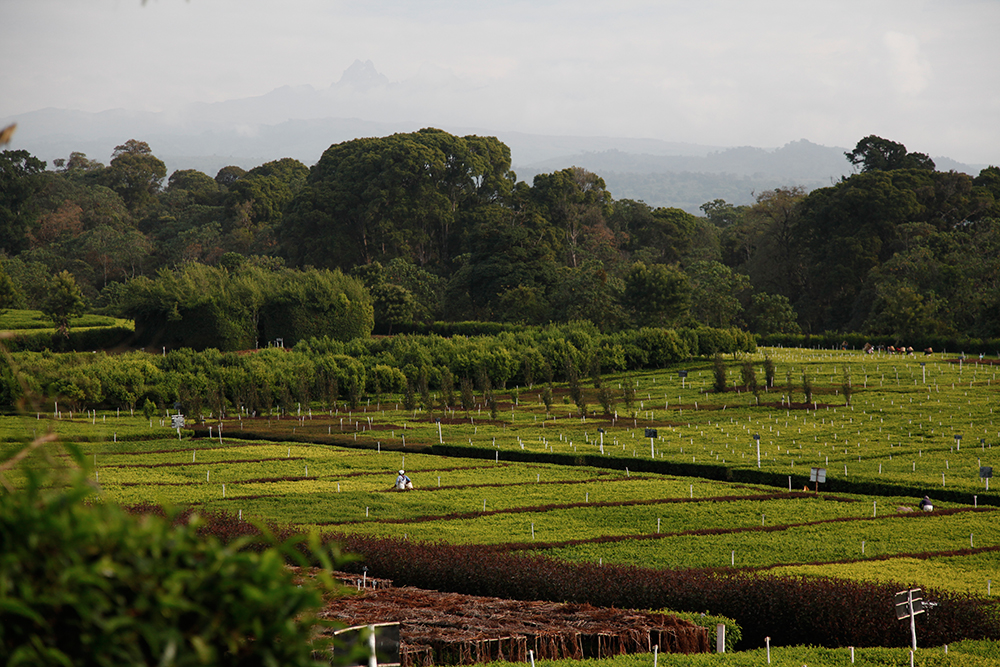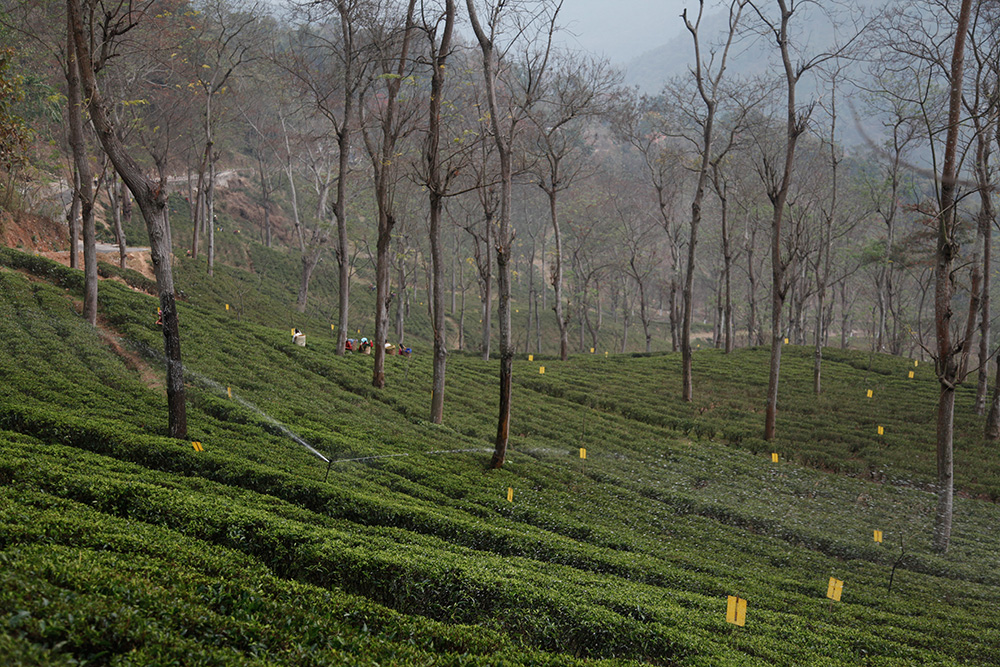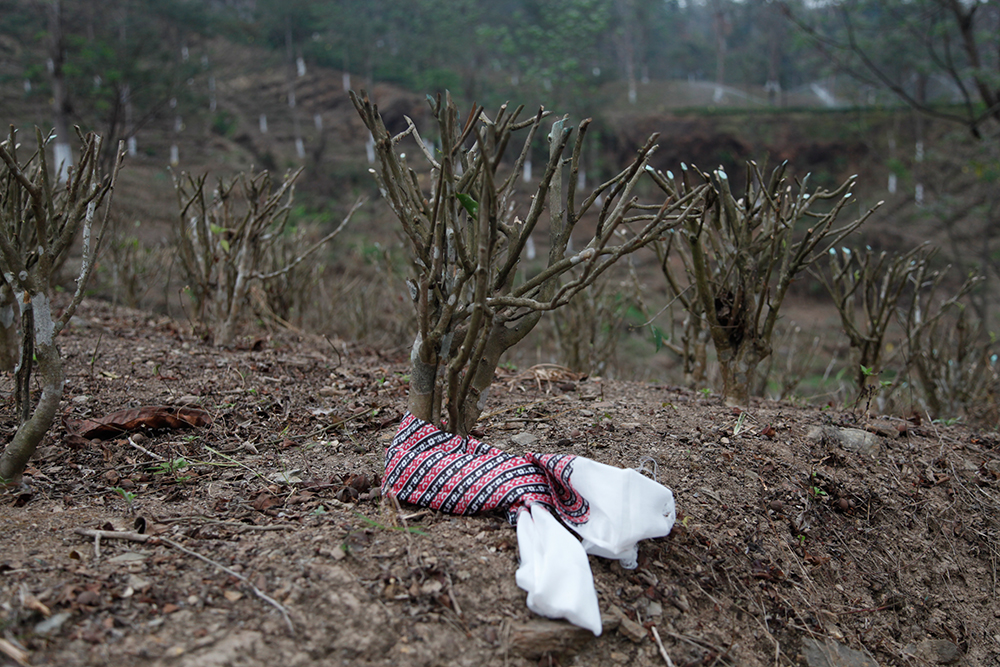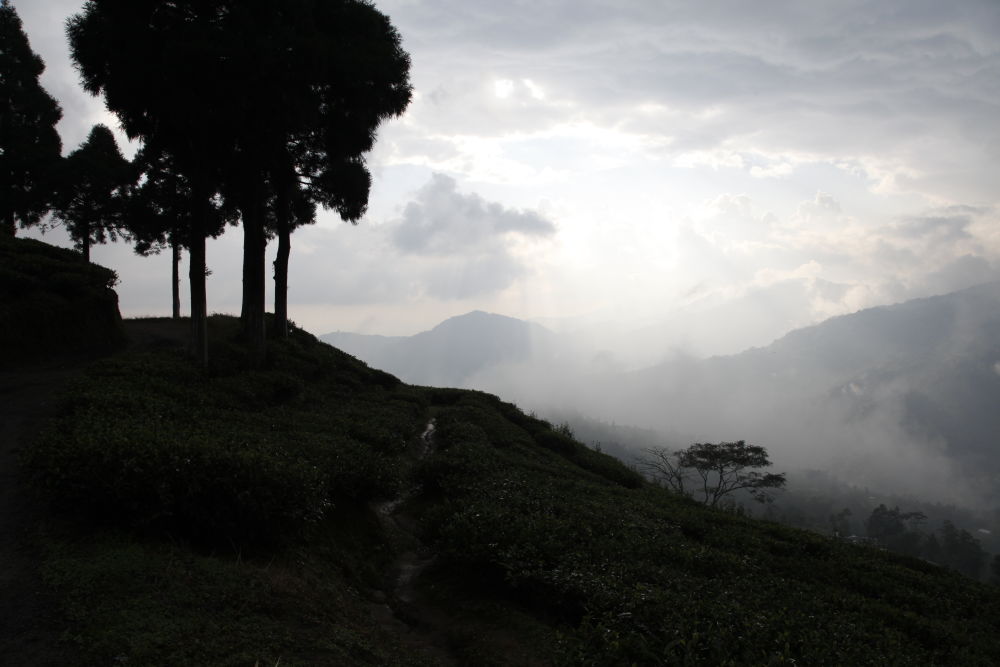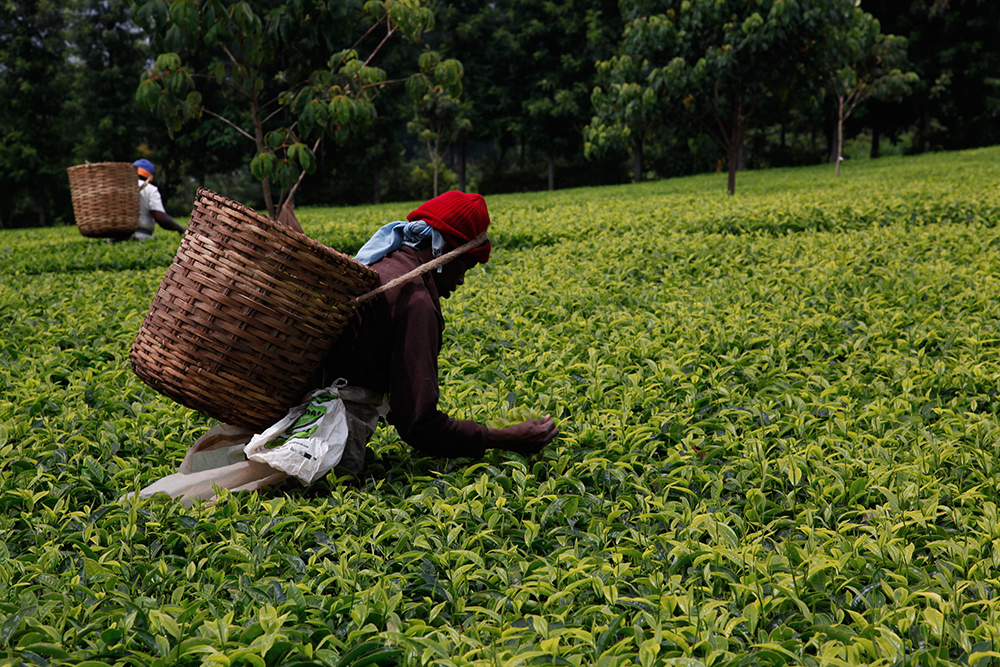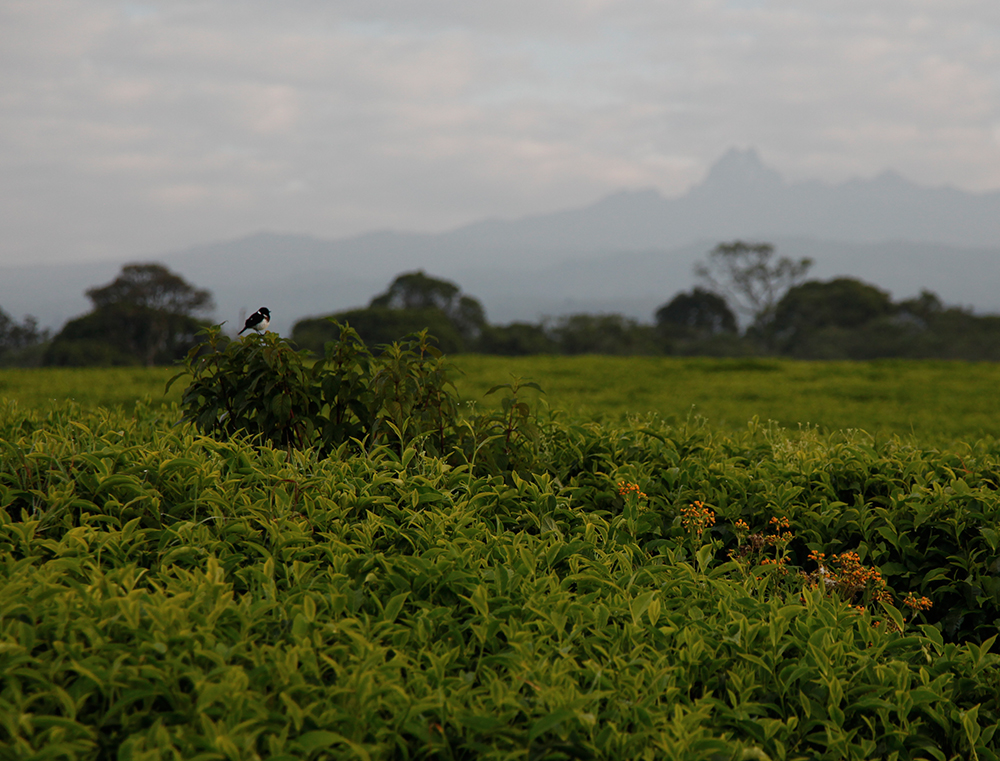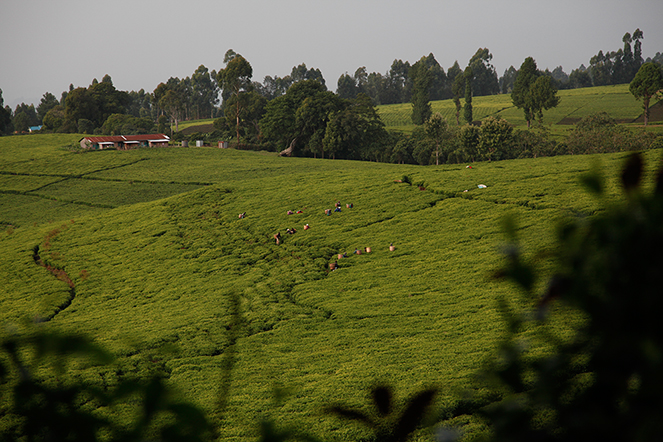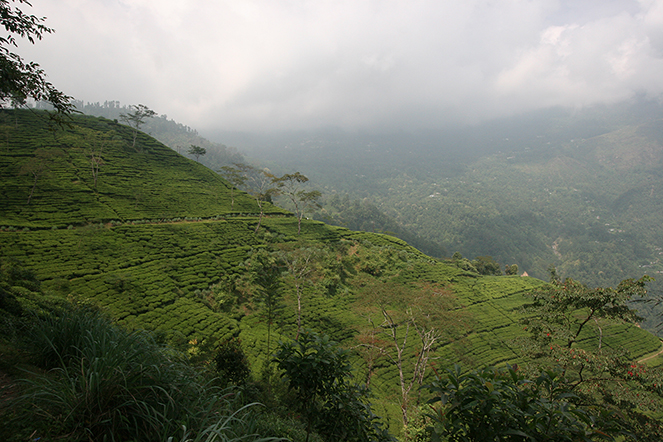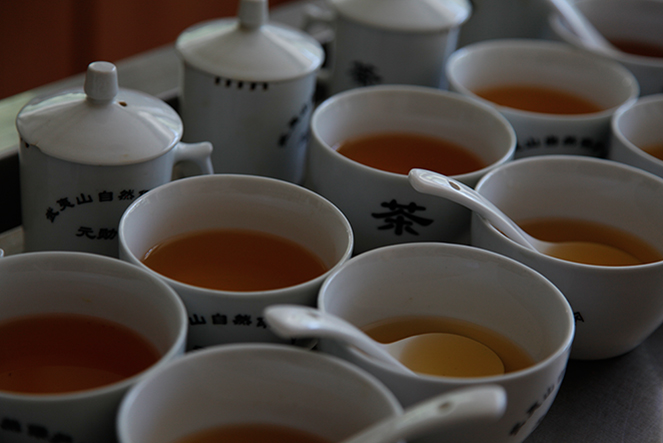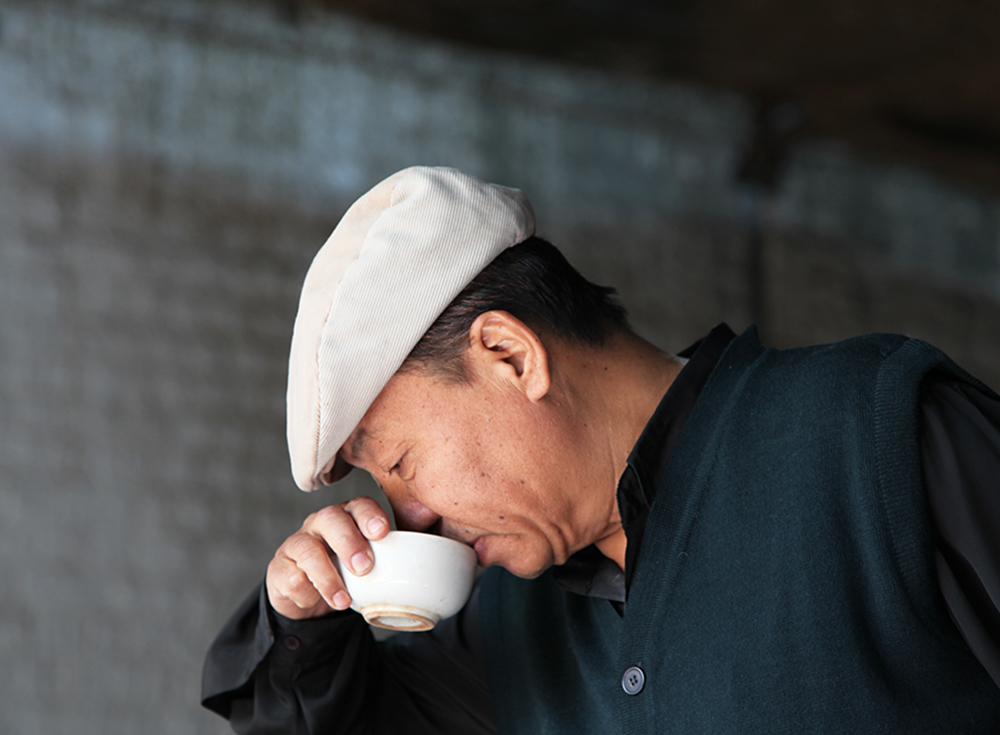In my teapot this morning, a portion of Mount-Kenya Golden-Leaves is opening up in the water. This is the first premium tea I’ve found in Kenya, and it has just arrived. I love its notes of honey, wood, wax and liquorice. They are warming, and celebrate the end of winter in their own way. They make you want to stay indoors a little longer, warm and cosy. They make you want to breathe in their aromas, cupping the bowl in both hands.
ARCHIVE FOR 2016
The microclimate of Darjeeling plantations
On the Delmas Bari plantation, where I was a few days ago, some plots were being watered as the ground was so dry. On this Darjeeling slope, which faces Sikkim, it hasn’t rained since October. In other areas, there had been a little rain in the previous days. This difference in climate on plantations barely a few kilometres apart is very specific to Darjeeling. Even on the same plantation there can be considerable variations in weather. Luckily, as we can see in this photo, the tender green buds are starting to grow. On this plot, there will be just one or two days longer to wait before the harvest can start in earnest.
A scarf for a blessing
In India, people sometimes welcome you by placing a silk scarf around your neck and blessing you. At DelmasBari, I was so saddened to see how dry the soil was that, in front of my hosts, I took the scarf that had just been given to me, and I blessed in my turn. I blessed one of the tea plants on the plantation, in the name of all the others, and I prayed for rain to come.
Waiting for rain in Darjeeling
In Darjeeling, where I am at the moment, there wasn’t a drop of rain in January or February. This means most plantations haven’t started to harvest yet. Only the ones with plots at low altitudes, who irrigate their plants, have been able to produce a few batches. But here, the first teas are never the best. In Darjeeling, when you’re looking for quality, you can never be in a hurry.
From field to factory
As soon as the tea leaves are picked, they must be taken to the factory as quickly as possible. The piles of leaves must not be allowed to ferment. Accidental fermentation is known to affect the quality of the tea. Here, in Kenya, they use very large baskets that are well ventilated so that the plucked leaves have room to breathe.
A tea plantation in Kenya
Kangaita in Kenya is one of the country’s few plantations that produce high-quality teas; in other words, whole-leaf. The national park of Mount Kenya borders the garden and many birds flit about the tea plants. On the other hand, elephants are not welcome, because of the damage they cause.
Here, you can see the peaks of Mount Kenya in the distance: the highest is 5,199 metres.
Tea from the slopes of Mount Kenya
Kenya is one of the biggest exporters of tea on the planet. Sadly, most of its tea is CTC (Cut, Tear, Curl) – the type used in tea bags. But that should not prevent us from seeking out, at higher altitudes, small producers aiming for quality. So here I am, on the slopes of Mount Kenya, tasting some magnificent black teas. It goes to show, one should not rush to judge: just as some great “appellations” occasionally throw up unpleasant surprises, I sometimes come across passionate people who have acquired serious expertise, in less well-known places.
Darjeeling: a tea that should not be bought blindly
Around the world, much more Darjeeling tea is sold than is actually produced in Darjeeling. There are also considerable differences between gardens in terms of quality, and considerable differences in quality within the same garden. These differences are due to major variations in weather (a garden might produce excellent teas in April, for example, which is impossible in July during the monsoon) and because the same plantation will have tea plants growing at widely varying altitudes. In Tukvar, for example, 1,000 metres in altitude separates the top of the highest plot and the lowest point on the plantation.
So we must be careful when we buy Darjeeling teas, and we should never rely on the name alone, however prestigious it may be. We should also bear in mind that plantations situated on the plains, of mediocre quality, sit alongside those within the appellation, and human nature being what it is, there is a great temptation to sell Terai teas under the Darjeeling name.
Connoisseurs of first-flush Darjeelings must wait a few more weeks to try the new spring harvest. In this region of the world, tea plants are dormant between November and February, as the soil is too cold for Camellia sinensis.
The three tasting senses
Three senses come into play when we drink tea and analyse the liquor: taste, which focuses on flavours (sweet, salty, acidic, bitter, umami, etc.), smell – made more effective through retro-nasal olfaction (a technique that consists of exhaling through the nose, bringing more olfactory molecules into the retro-nasal cavity) – and touch, which of course tells us whether the tea is hot or cold, astringent or silky, and other sensations. If we want to describe a tea, it is essential to understand about flavours, olfactory notes and touch. It helps us when we taste together, so we can share our impressions.
Tea tasting is all about the senses
When I give a lesson at The Tea School, or when I arrange a tasting for colleagues, one of the first things I do is to ask them a very simple question: once you have put food in your mouth, how many senses are in contact with this food, and which ones? The answers always vary. Now, to taste properly – and this goes for any food – it is essential to understand which senses come into play, and then to build up the appropriate vocabulary.

